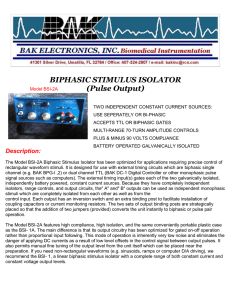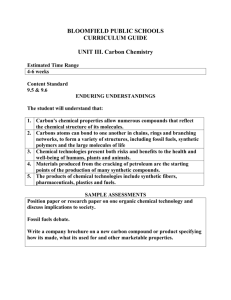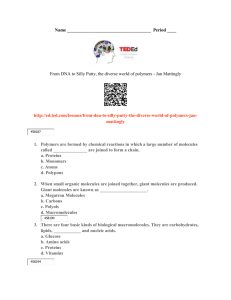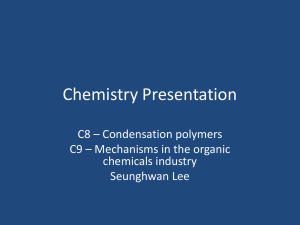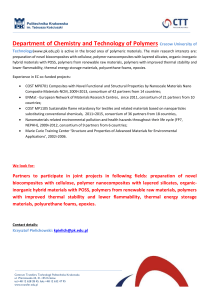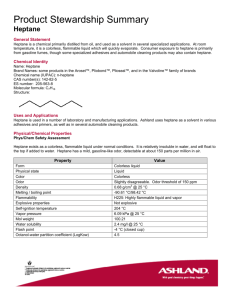K08
advertisement
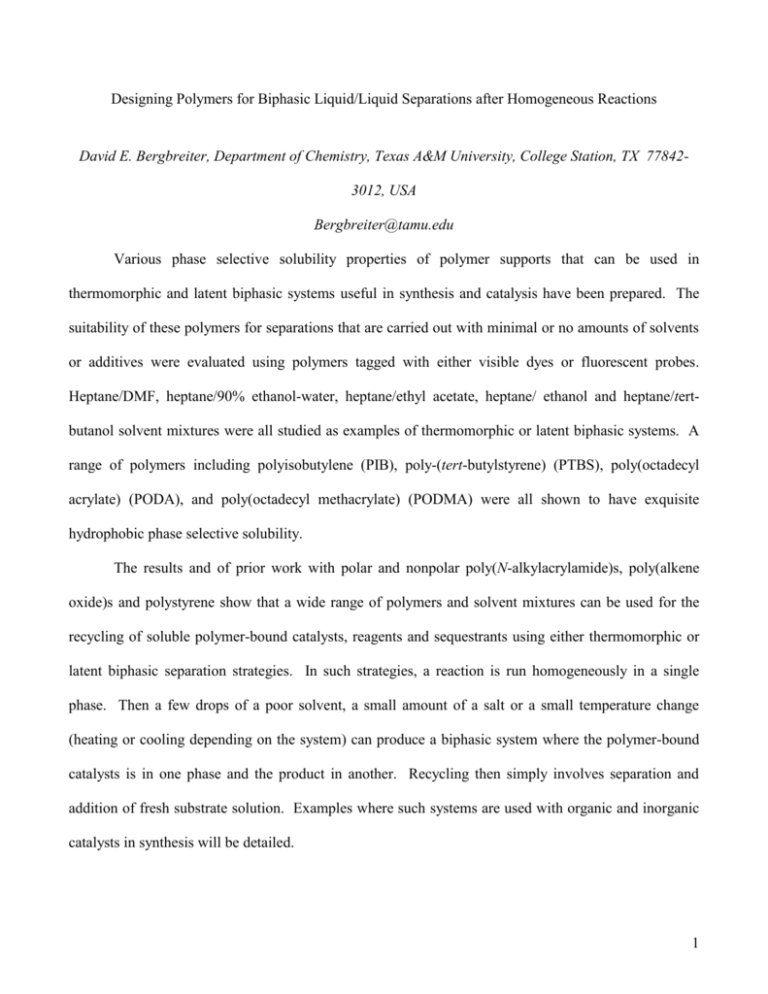
Designing Polymers for Biphasic Liquid/Liquid Separations after Homogeneous Reactions David E. Bergbreiter, Department of Chemistry, Texas A&M University, College Station, TX 778423012, USA Bergbreiter@tamu.edu Various phase selective solubility properties of polymer supports that can be used in thermomorphic and latent biphasic systems useful in synthesis and catalysis have been prepared. The suitability of these polymers for separations that are carried out with minimal or no amounts of solvents or additives were evaluated using polymers tagged with either visible dyes or fluorescent probes. Heptane/DMF, heptane/90% ethanol-water, heptane/ethyl acetate, heptane/ ethanol and heptane/tertbutanol solvent mixtures were all studied as examples of thermomorphic or latent biphasic systems. A range of polymers including polyisobutylene (PIB), poly-(tert-butylstyrene) (PTBS), poly(octadecyl acrylate) (PODA), and poly(octadecyl methacrylate) (PODMA) were all shown to have exquisite hydrophobic phase selective solubility. The results and of prior work with polar and nonpolar poly(N-alkylacrylamide)s, poly(alkene oxide)s and polystyrene show that a wide range of polymers and solvent mixtures can be used for the recycling of soluble polymer-bound catalysts, reagents and sequestrants using either thermomorphic or latent biphasic separation strategies. In such strategies, a reaction is run homogeneously in a single phase. Then a few drops of a poor solvent, a small amount of a salt or a small temperature change (heating or cooling depending on the system) can produce a biphasic system where the polymer-bound catalysts is in one phase and the product in another. Recycling then simply involves separation and addition of fresh substrate solution. Examples where such systems are used with organic and inorganic catalysts in synthesis will be detailed. 1

